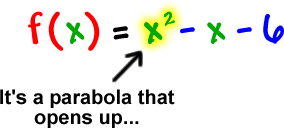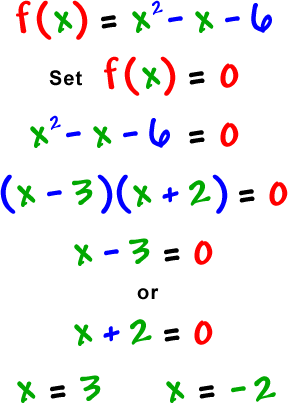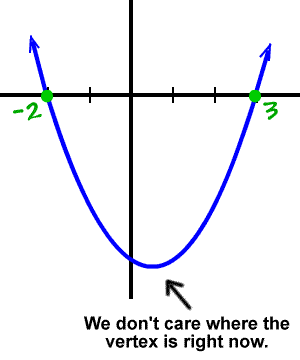Recall that a real zero is where a graph crosses or touches the x-axis.
Think of some points along the x-axis.

What are the y values? 0!

And remember that f(x) is just a fancy function name for y...
So, if we set
| and solve... |
We get the real zeros!
Check it out:

Let's see where it crosses the x-axis:
 |
|
So, the real zeros are
-2 and 3
